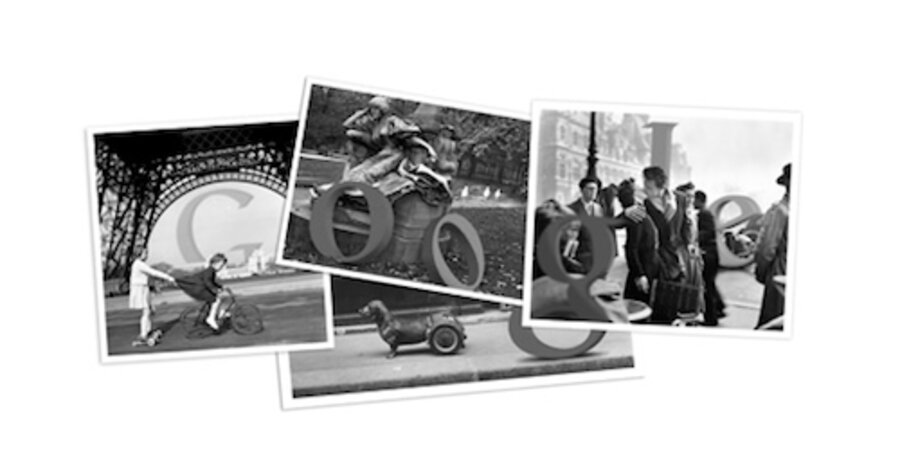Robert Doisneau: The story behind his famous 'Kiss'
Loading...
French photographer Robert Doisneau, who is being feted with a Google Doodle Monday, is renowned for his work depicting everyday moments in the life of Parisians. One of his most famous photos, “Le baiser de l'hôtel de ville (The Kiss by the Hôtel de Ville),” a picture of a couple kissing that has graced thousands of postcards and posters, seems to be the epitome of his spontaneous style.
However, after it became a classic photo – forever associated with Paris and romance – it provoked lawsuits, including one that cast the photo’s serendipity in a new light.
The photo was taken by Doisneau in 1950 for Life Magazine after Doisneau was instructed to get shots of couples in Paris for a spread. Its popularity erupted years later, when a publisher asked Doisneau in 1986 if he could use the photo for a poster and Doisneau allowed it.
At least one couple incorrectly believed themselves to be the two seen embracing in Doisneau’s photo. Jean and Denise Lavergne told him so over lunch one day. At the time, Doisneau said nothing to disprove their statement. Still believing themselves to be the couple, the Lavergnes sued Doisneau for more than $18,000, claiming that he had used their likenesses without permission. A second suit came around the same time from a woman named Françoise Delbart (who now goes by her married name of Françoise Bornet). She sued the photographer in 1993 for a share of future sales and an additional $3,773.
Because of the two lawsuits, Doisneau revealed that the picture had in fact been staged after he had seen Ms. Bornet and Jacques Carteaud kissing and asked them if they could do it again for a photo. Doisneau then photographed Bornet and Carteau, both hopeful actors, in three different locations, which included the final location of near the Hôtel de Ville. After they posed, Doisneau gave Bornet a print of the photo with his stamp and signature.
Courts dismissed the claims of both the Lavergnes and Bornet in 1993, saying that the photo couldn’t be used to positively identify anyone in it.
Bornet auctioned her print of the photo in 2005, where it was sold for the equivalent of $242,000.
“The photo was posed,” Bornet said in an interview with French media. “But the kiss was real.”
For more tech news, follow us on Twitter @venturenaut.






